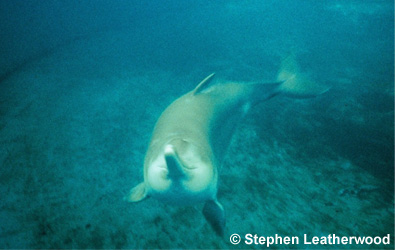It feels like history is repeating itself again in the Yangtze River. Earlier this year, scientists declared that the Yangtze River dolphin or baiji (Lipotes vexillifer), our top EDGE mammal, was now probably extinct. In another glaring example of how human growth and industrial development has impacted biodiversity in China, the Yangtze giant soft-shelled turtle (Rafetus swinhoei) has now been reduced to only two surviving individuals, a male and a female held in two separate zoos in eastern China. The last remaining male turtle is thought to be 100 years old, and the last remaining female – an 80-year-old animal that was donated to Changsha Zoo by a travelling circus 51 years ago – now lives in a bulletproof enclosure under 24-hour surveillance.
To read the full article please click here
To watch the video click here
This tragic tale is only too familiar. Most of the known photographs of Yangtze River dolphins are of a single individual called Qi Qi, who died in 2002 after spending over 22 years of his life in captivity at the Wuhan dolphinarium. Captured at the age of two, it was hoped that this precious animal would be used in a captive breeding programme. However, although Qi Qi became a famous ambassador for his species, a suitable ‘wife’ was never found for him; the only female baiji that was ever placed in the dolphinarium died after only two years, just before she became reproductively viable. The last verified sighting of a wild baiji was made in the same year that Qi Qi died.
Together with the baiji, many other unique and evolutionarily distinct Yangtze animals – such as the Yangtze finless porpoise, Siberian white crane, Yangtze paddlefish and Chinese alligator – are increasingly threatened by human impacts. We can only hope that this time, efforts to save the Yangtze giant soft-shelled turtle will be more successful. Efforts are being planned to implement a conservation breeding programme for the species.
Click here to see an Action Plan for this species.
